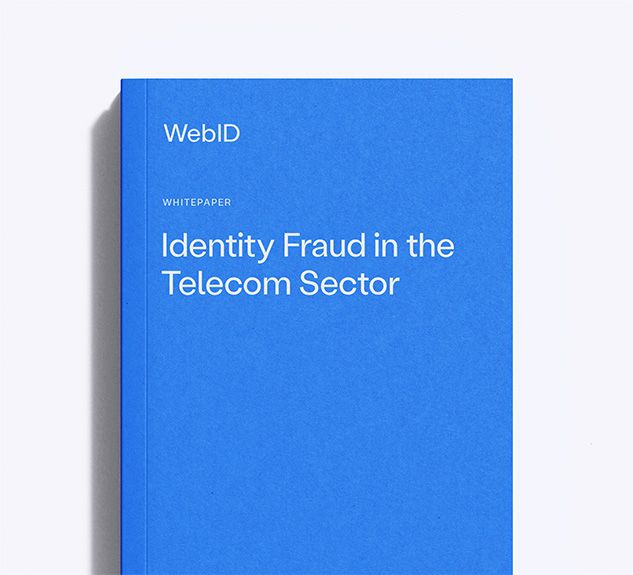Fraud Prevention
How Businesses Can Protect Themselves from Economic Crime Risks
Fraud is becoming increasingly sophisticated and diverse in today’s digital world. Whether it’s identity theft, return fraud, money laundering, or other forms of financial fraud, the risk of falling victim – either as a company or an individual – is ever-present. However, with the right strategies and tools, businesses can significantly minimize these risks.
What Is Fraud and Why Is It Dangerous?
Fraud encompasses all deliberately executed actions intended to deceive someone, causing financial or personal harm while unlawfully gaining a financial advantage for oneself or a third party. The consequences for companies – and individuals – can be severe: financial loss, reputational damage, and legal repercussions are no longer rare occurrences.
Common Types of Fraud in Businesses
- Internal Fraud
Terms like “fraudulent expense reports,” “embezzlement,” or “financial report manipulation” already illustrate the variety of possible internal fraud offenses. - External Fraud
Social Engineering tactics such as phishing, identity theft, fake invoices, or return fraud fall under the category of external fraud. - Supplier and Customer Fraud
Fake invoices, false payment demands, or services that were never provided can pose a serious fraud risk for businesses.
The Importance of Fraud Prevention
Fraud prevention includes all measures aimed at preventing, detecting, and combating fraudulent activities within and outside a company. It’s not just about minimizing economic risks but also about preventing reputational damage.
Effective Measures for Fraud Prevention
Comprehensive fraud prevention is not a one-time action but a continuous process. Businesses can reduce fraud risks by implementing a combination of various measures.
Internal Control Systems for Fraud Prevention
Financial institutions, insurance companies, government agencies, and businesses in other sectors must ensure their internal and external processes comply with regulatory requirements to prevent fraud risks such as identity fraud, money laundering, or terrorist financing.
Key measures include regular internal and external audits, as well as automated transaction monitoring mechanisms.
Raising Employee Awareness for Fraud Prevention
Employees may inadvertently contribute to fraud by failing to report suspicious transactions or suspected identity theft. That’s why it is crucial to communicate clear consequences for internal fraud cases – and potentially establish an anonymous whistleblower system.
When it comes to fraud risks, well-trained employees – especially those responsible for compliance – are typically more aware of suspicious fraudulent practices. They are also better informed about the necessary actions to take in case of suspected fraud and the appropriate timing for initiating processes. This includes having a well-defined emergency fraud investigation plan, launching internal investigations, evaluating potential legal steps, and ensuring transparent communication with all relevant stakeholders.
Technologies for Fraud Prevention
Keeping IT systems up to date is essential for any company. Beyond that, implementing the right IT infrastructure is crucial to detecting suspicious patterns in financial transactions or user behavior.
AI-driven and big data analytics, automated fraud detection systems, and blockchain technologies can effectively help minimize fraud risks in businesses.
Identification of Individuals and Entities
A key measure to reduce fraud risks from external actors is the clear identification of individuals and entities before establishing a business relationship. If a company and its beneficial owners need to be verified, this process follows well-defined Know-Your-Business (KYB) regulations, as outlined in Section 11 (4) of the German Anti-Money Laundering Act (GwG).
Additionally, secure employee identification is becoming increasingly important for globally operating companies, making Know-Your-Employee (KYE) standards more relevant.
How Can Identity Verification Solutions Help Prevent Fraud?
Modern, advanced identification solutions play a crucial role in fraud prevention. By leveraging technologies such as biometric authentication, digital identity verification, and behavioral-based authentication, it becomes significantly harder for criminals to impersonate others.
When it comes to verifying companies and their beneficial owners, WebIDs CorporateID is the solution of choice: With CorporateID, banks, insurance
companies, and other obligated businesses can identify beneficial owners (UBOs) using the German Federal Gazette as a primary source – automated and reliable, even for complex corporate structures across Germany and many European countries.
For verifying individuals, businesses can benefit from WebIDs extensive expertise in digital identification solutions, such as:
- Biometric Verification
Biometric features are unique to everyone. Advanced biometric identification solutions, such as WebIDs AutoID, ensure that only authorized individuals gain access to sensitive systems or information. - Verification via Live Video Chat
Companies using VideoID benefit from highly trained agents at WebIDs video service center, who conduct real-time identity verification. - Online Banking-Based Identification
With AccountID, secure and rapid customer identification is carried out via a reference transaction through online banking.
Fraud prevention is an ongoing challenge in today’s business world. However, with the right combination of internal controls, employee training, technological solutions, and robust identification processes, companies can significantly reduce fraud risks and safeguard their reputation and financial integrity.
Identity Fraud in the Telecom SectorIdentity Fraud in the Telecom Sector
This white paper examines the legal framework that supports these regulations, highlights the opportunities for telecom providers and explains the benefits of online identification as an efficient and secure solution that enables the digital transformation of outdated KYC processes.
This white paper examines the legal framework that supports these regulations, highlights the opportunities for telecom providers and explains the benefits of online identification as an efficient and secure solution that enables the digital transformation of outdated KYC processes.
